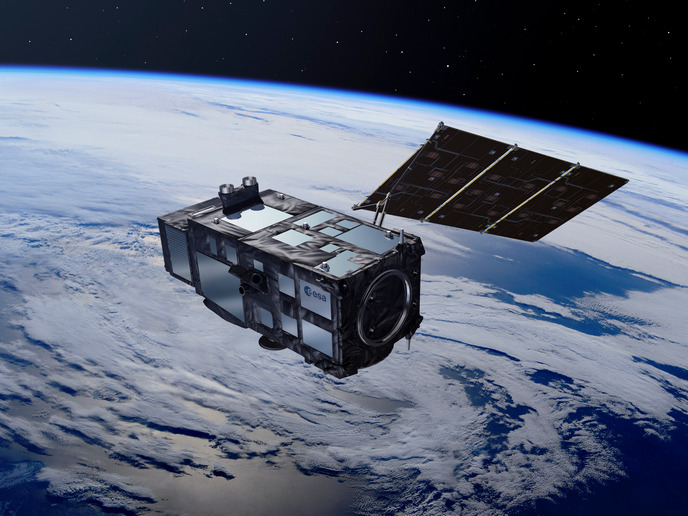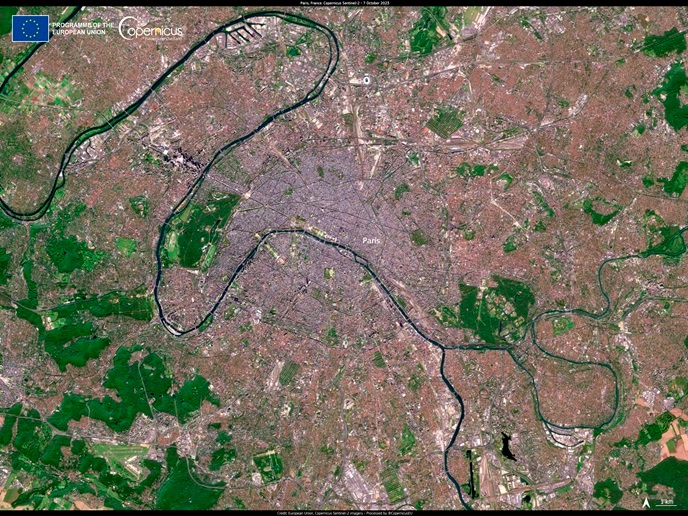Infusing AI into Earth Observation: ushering in a new era in climate response
Conventional machine learning architectures are not suitable to address Earth observation (EO) problems. The EU-funded DeepCube project is introducing innovative solutions to overcome this. By leveraging advanced AI and semantic web technologies, DeepCube is tapping into the vast, open data produced daily by the Sentinel satellites of the Copernicus EO programme to tackle high-impact environmental and societal challenges correlated with the climate emergency. “Our focus extends beyond standard computer vision classification applications, honing in on the quantitative estimation of variables linked to geophysical and biological processes,” notes project coordinator Ioannis Papoutsis.
Advanced AI technologies to the rescue
DeepCube’s research targets certain high-impact EO problems related to the biosphere, atmosphere and anthroposphere interaction. These include forecasting drought and heat impacts and understanding climate-induced migration in Africa, forecasting wildfire danger in Mediterranean regions, monitoring infrastructure for ground instability and assessing the environmental impact of tourism. To solve these complex problems, DeepCube is using a blend of data-driven deep learning and physical modelling, creating a unique hybrid approach that transcends the boundaries of conventional AI. “Bringing in domain expertise and physical laws, while reducing uncertainties, aids in understanding ecosystem dynamics after events like droughts,” explains Papoutsis. DeepCube also uses explainable AI and causal AI in their deep learning pipelines (a sequence of steps that processes data, designs deep neural network architectures, trains models, and generates predictions using deep learning techniques). “Explainable AI opens the ‘black box’ of deep learning, helping to understand why certain predictions are made. By applying this technique in wildfire danger forecasting, for example, we can identify the main factors influencing the model predictions,” states Papoutsis. Causal AI, another key component, helps understand cause-effect connections in models. This is crucial when dealing with issues like climate-induced displacement, where relationships between conflict, drought and displacement need to be identified and quantified.
Cutting-edge technologies underpinning AI pipelines
DeepCube’s applications are fuelled by technologies supporting the creation of AI pipelines. These include the Earth System Data Cube (ESDC), a unified data set of crucial Earth system variables, and Semantic Data Cube, which semantically enriches the ESDC. Additionally, DeepCube expands Hopsworks, an open-source AI platform supporting distributed deep learning. The project also offers visualisation tools such as Sextant for interacting with linked geospatial data and a web platform for extracting visual concepts from social media streams. Ultimately, the DeepCube platform provides an integrated environment for EO and AI specialists to create value chains from raw EO and non-EO data. This adaptable platform can be deployed in various cloud computing environments, and within it all the mentioned technologies share resources and define dataflows in a unified solution.
Advancing science through open-access research and global partnerships
DeepCube has made substantial contributions to the scientific community, publishing high-impact research and making its deep learning models, codes, data sets and ontologies available as open-access assets. Notably, researchers published ‘Hephaestus’, a unique manually annotated data set of Sentinel-1 interferograms for volcanic unrest early warning service development. In their wildfire hazard forecasting research, researchers have published ‘mesogeos’, a daily data cube for developing next-day fire hazard forecasting models in the Mediterranean. DeepCube also involves direct beneficiaries in the design and evaluation of their services to maximise impact. The work on climate-induced migration is developed in collaboration with the Internal Displacement Monitoring Centre and has gained interest from NGOs and international organisations like UNICEF, the World Food Programme and the United Nations Development Programme. Their fire danger forecasting service, developed in collaboration with the Hellenic Fire Service, has also captured the interest of the International Telecommunication Union’s ‘AI for Good’ initiative.
Keywords
DeepCube, EO, deep learning, explainable AI, Earth observation, Copernicus, causal AI, artificial intelligence







